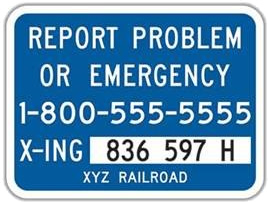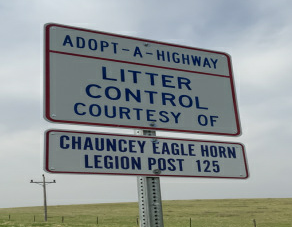South DakotaDepartment of Transportation
Transportation
Aviation
About Office of Aeronautics Services
Office of Aeronautics Services
Airports Conference
Aerospace Education
Airport Information
Links
Aviation Systems Plan
Bridges
Office of Bridge Design
Design & Plans
Historical Bridges
Inventory & Inspection
Posted Structures
Reference Information
SD Bridge Photos
Doing Business
Certification & Accreditation
About Certification & Accreditation
SDDOT Accreditation Certification List
Approved Products
Manuals & Documents
Welding Certifications
Training
Contractors
Bid Letting Information
Concrete Pipe Release
Contractors/Suppliers
Prequalified Contractors
CMS Web Reports
Disadvantaged Business Enterprise (DBE)
Fuel Price Index
Labor Compliance
Materials
Preconstruction Meetings
Price Adjustment Guidelines
Standard Specifications
Subcontract Requirements
Forms & Documents
Webinars
Alternative Contracting
Engineering/Design Services
Consultant Services
Downloadable Files
Manuals
News & Updates
Right of Way / Relocation Assistance
Standard Bid Items
Standard Plates
Surveyors
Utility Coordination
Environmental
About Environmental
Agreements
Endangered Species
Environmental Assessments
Forms
Stormwater
Wetland Mitigation
Local Governments
About Local Governments
Bridge Improvement Grants
City/County Fund Balances
Emergency Relief (ER)
Federal Bridge Program
Forms & Documents
Secure Accounts Billing
Transportation Economic Development Grants
Urban Systems
Rural Access Infrastructure Fund Program
Traffic Incident Management
Training
Projects & Studies
Planning
Carbon Reduction Strategy
Freight Plan
Long Range Plan
Metropolitan Planning Organization
Non-state Public Road Inventory
Pavement Condition Monitoring
Pavement Management
South Dakota EV Fast Charging Plan
Statewide Transportation Improvement Program – STIP
Transportation Asset Management Plan (TAMP)
Inside SDDOT
Forms & Publications
Brochures
Forms
Manuals
Maps
Newsletters
Reports
SDDOT Engagement Opportunities
Join One of Our Contact Lists
Press Releases
Media Kits
News Stories
Branding and Identity Guidelines
Learn More about the SDDOT Logo
SDDOT Blog
Operation Lifesaver
Operation Lifesaver
Operation Lifesaver is a public information and education program dedicated to reducing the number of crashes, injuries and fatalities at the nation's numerous highway-rail grade crossings.
Operation Lifesaver, Inc →
Operation Lifesaver, Inc →
General Information
What Operation Lifesaver is...
...An active, continuous public information and education program to help prevent and reduce crashes, injuries and fatalities and improve driver performance at the nation's 300,000 public and private highway-rail grade crossings.Why it is needed...
...Because thousands of people are seriously injured and hundreds are killed in the nearly 6,000 highway-rail grade crossing crashes each year. ...Because a highway-rail grade crossing presents a unique traffic environment for motorists, many drivers do not cross railroad tracks often enough to be familiar with the warning devices designed for their safety. Often they are unaware that trains cannot stop as quickly as motor vehicles to avoid collision. Others simply ignore all warning signs because they are "in a hurry" and would rather play "beat the train" than wait. Driver ignorance and impatience are the most common factors contributing to motor vehicle/train collisions at highway-rail grade crossings.When it began...
...Operation Lifesaver was born in Idaho in 1972 after Union Pacific Railroad and community leaders in the state decided to band together and fight the growing number of highway-rail grade crossing crashes, injuries and fatalities with a public education program. The result? At the end of the first year, the highway-rail grade crossing fatality rate dropped a resounding 39 percent. ...A second program, initiated in Nebraska, demonstrated even more impressive results after a one-year period -- a 46 percent reduction in rail/highway grade crossing fatalities.Where it is active...
...All states have their own Operation Lifesaver programs. It is at the grassroots level -- in the cities, in rural communities, and in the schools where Operation Lifesaver has been most effective. States have reported fatality reductions at highway-rail grade crossings ranging from 28 percent to 100 percent one year after establishing the program.Who gets involved...
...The nation's railroads, related federal, state, and local governments, business, railroad suppliers, labor,civic and community leaders and other concerned safety professionals are all part of state programs. But it doesn't end there. Any person, including yourself and your organization, is welcome to join in a state program or become involved at the local level doing whatever you can to help educate motorists that they need to exercise greater care when driving across highway-rail crossings.How you can help...
...As we've said, the key to success of Operation Lifesaver is through participation at the grassroots level. You can become involved by contacting Operation Lifesaver, Inc. or Connie Greguson, SD state Coordinator. Your local PTA, church, woman's club, civic or fraternal organizations to which you belong may want to be a part of Operation Lifesaver.
Safety Tips
Expect a train on any track at any time
Most trains do not travel on a regular schedule. Be cautious at a grade crossing at any time of the day or night.Don't get trapped on a grade crossing
Never drive onto a grade crossing until you are sure you can clear the tracks. Once you have started across the tracks, keep going, especially if you see a train approaching.Never drive around the gates
If the gates are down, stop and stay in place. Do not cross the tracks until the gates are raised and the lights have stopped flashing.Watch out for the second train
When you are at a multiple track crossing and the last car of the train passes the crossing, do not proceed until you are sure that no other train is coming on another track, especially from the opposite direction.Get out of your vehicle if it stalls
If your vehicle stalls on a crossing, get everyone out and off the tracks immediately. If a train is coming, stay clear of the tracks. If no train is in sight, post lookouts and try to start the vehicle or push it off the tracks.Never race a train
Racing a train to a crossing is foolhardy. You will never have a second chance if you lose.Watch for vehicles that must stop at highway-rail grade crossings
Be prepared to stop when you are following buses or trucks that are required to stop at highway-rail grade crossings.Don't misjudge the train's speed and distance
Because of the large size of a train, it appears to be moving much slower than you think. If you have any doubts stop and wait for the train to pass.Trains can't stop quickly...you can
A train going 30 mph takes 0.6 miles to come to a stop. A train traveling 60 mph takes 1.4 miles to halt.Be especially watchful at night for highway-rail grade crossing warning signs
At night is particularly difficult to judge speed and distance. If you have any doubts it is always better to be overly cautious than sorry.
Signs of Life
Public highway-rail grade crossings have been marked with one or more of the following warning devices for your safety by both state highway departments and the railroad companies. Learn what they are and watch for them. With these warning devices, and caution on your part, highway-rail grade crossing crashes should never happen.
 |
Advance Warning Signs Advance warning signs mean a highway-rail grade crossing is ahead and are located at sufficient distance to allow you to stop (if necessary) before reaching the crossing. |
 |
Pavement Markings Pavement markings, consisting of a R X R and stop line, may be painted on the pavement in front of the crossing. Always stay behind the painted stop line while waiting for a passenger train. |
 |
Railroad Crossbuck Signs Railroad Crossbuck signs are found at most public crossings. These signs should be treated the same as a yield sign. The driver should slow down and be prepared to stop upon sighting a train. If there is more than one track, a sign below the crossbuck indicates the number of tracks at this crossing. |
 |
Flashing Light Signals Flashing light signals are used with crossbuck signs at many highway-rail crossings. Always stop when the lights begin to flash. This means a train is coming. If there is more than one track, make sure all tracks are clear before crossing. |
 |
Gates Gates are used with flashing light signals at certain crossings. Stop when the lights begin to flash and before the gate begins to lower across your road lane. Do not attempt to cross before the gates are raised and the lights have stopped flashing. |
 |
Operational Lifesaver Promotional materials may be obtained from the South Dakota Safety Council/Operation Lifesaver:
Aviation
About Office of Aeronautics Services
Office of Aeronautics Services
Airports Conference
Aerospace Education
Airport Information
Links
Aviation Systems Plan
Bridges
Office of Bridge Design
Design & Plans
Historical Bridges
Inventory & Inspection
Posted Structures
Reference Information
SD Bridge Photos
Highways
Public Transit
General Information / Notices
Procurement
Provider Network
Rural Transit
Specialized Transit
Urban Transit Planning Program Units
Forms, Policies, and Publications
Railroads
© 2026 State of South Dakota. All Rights Reserved.
South Dakota Department of Transportation
Becker-Hansen Building
700 E. Broadway Ave.
Pierre, SD 57501
Becker-Hansen Building
700 E. Broadway Ave.
Pierre, SD 57501
Powered by:
Modern Logic
Modern Logic
Region & Area Offices
Travelers
© 2026 State of South Dakota. All Rights Reserved.
South Dakota Department of Transportation
Becker-Hansen Building
700 E. Broadway Ave.
Pierre, SD 57501
Becker-Hansen Building
700 E. Broadway Ave.
Pierre, SD 57501
Powered by:
Modern Logic
Modern Logic




